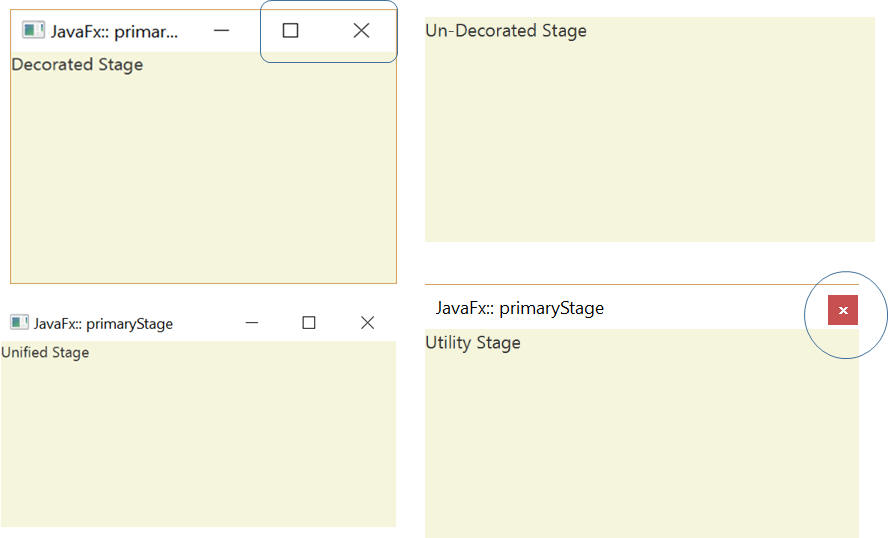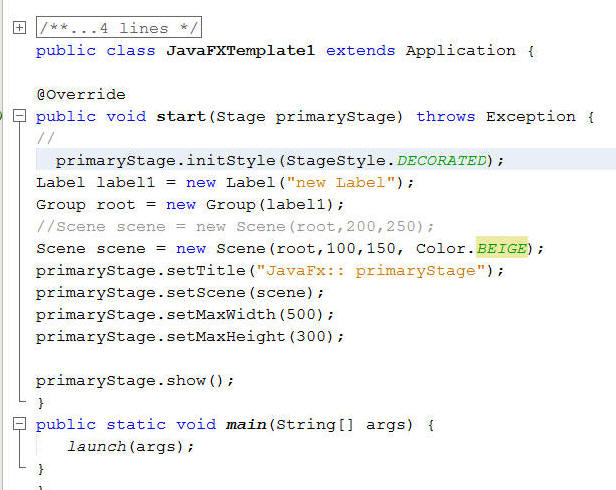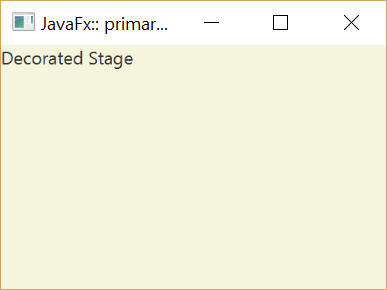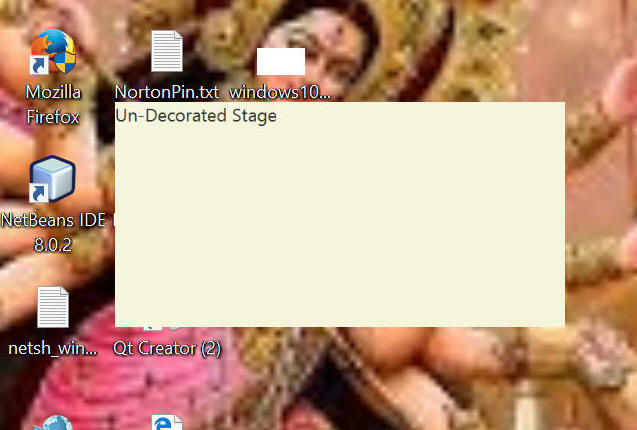- A decorated stage has a solid white background and platform decorations.
- An undecorated stage has a solid white background and no decorations.
- A transparent stage has a transparent background and no decorations.
- A unified stage has platform decorations and no border between
the client area and
decorations; the client area background is unified with the decorations. - To see the effect of the unified stage
style, the scene should be filled with Color.TRANSPARENT. Unified style is a conditional feature. - A utility stage
has a solid white background and minimal platform decorations.


package javafxtemplate1;
//Recursion_BindContent_ListView1
//textProperty().addListener Listview Label
import javafx.application.Application;
import javafx.scene.Group;
import javafx.scene.Scene;
import javafx.scene.control.Label;
import javafx.scene.layout.VBox;
import javafx.scene.paint.Color;
import javafx.stage.Stage;
import javafx.stage.StageStyle;
/**
*
* @author Manas9
*/
public class JavaFXTemplate1 extends Application {
@Override
public void start(Stage primaryStage) throws Exception {
//
primaryStage.initStyle(StageStyle.DECORATED);
Label label1 = new Label("Decorated Stage");
Group root = new Group(label1);
//Scene scene = new Scene(root,200,250);
Scene scene = new Scene(root,200,250, Color.BEIGE);
primaryStage.setTitle("JavaFx:: primaryStage");
primaryStage.setScene(scene);
primaryStage.setMaxWidth(500);
primaryStage.setMaxHeight(300);
primaryStage.show();
}
public static void main(String[] args) {
launch(args);
}
}

Undecorated Stage:
